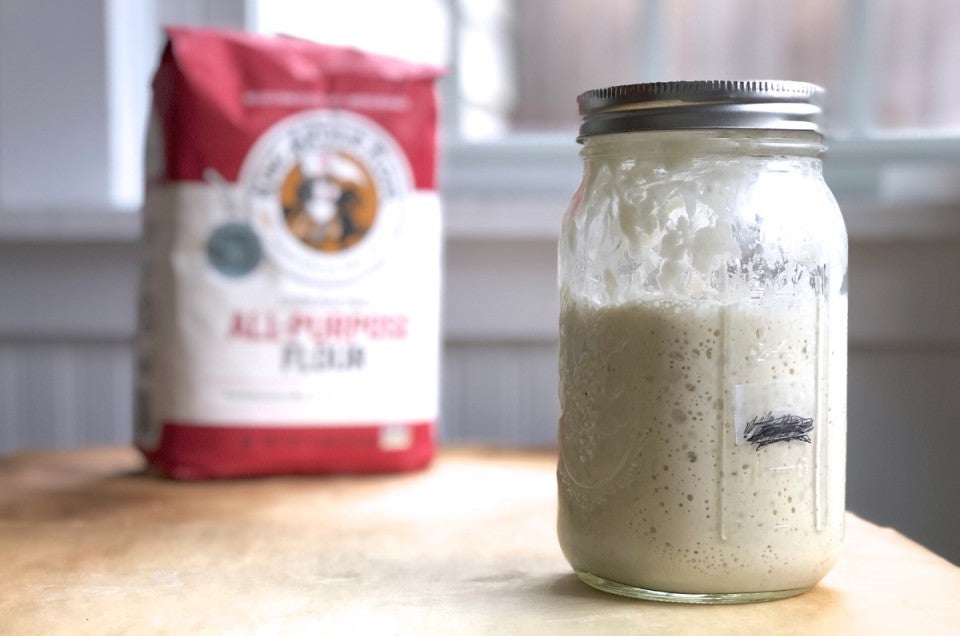


How's your sourdough starter doing? Fresh sourdough starter is a wonderful resource. Bread, pancakes, waffles, cake... there are so many delicious directions you can take with sourdough. The key: maintaining your sourdough starter so that it's healthy, happy, and ready to go when you are.
Once you've successfully created your starter, you'll need to feed it regularly.
If you bake a lot of sourdough treats, you may want to keep it on your counter, at room temperature. While this means feeding it twice a day, it also means your starter will be ready to bake with at the drop of a hat (er, oven mitt).
However, many of us don't want the commitment of twice-a-day feedings. If you're a more casual sourdough baker, it's possible to store your starter in the refrigerator, feeding it just once a week.
Let's take a look at both methods.
But first, a word of advice. Sourdough baking is as much art as science. This method for maintaining sourdough starter is just one of many you might choose to follow. It might not exactly match what you read in your favorite online bread forum, or what your neighbor down the street does.
And that's OK. If you have a process you've successfully followed before, then hey, stick with it. Or try this one and compare. All good.
Room temperature is the best environment for the yeast and lactobacilli that inhabit your starter, and you can learn a lot about your starter by observing a twice-a-day feeding regimen with the starter at room temperature.
If you're willing to maintain your starter at room temperature by feeding it twice a day, here's how.
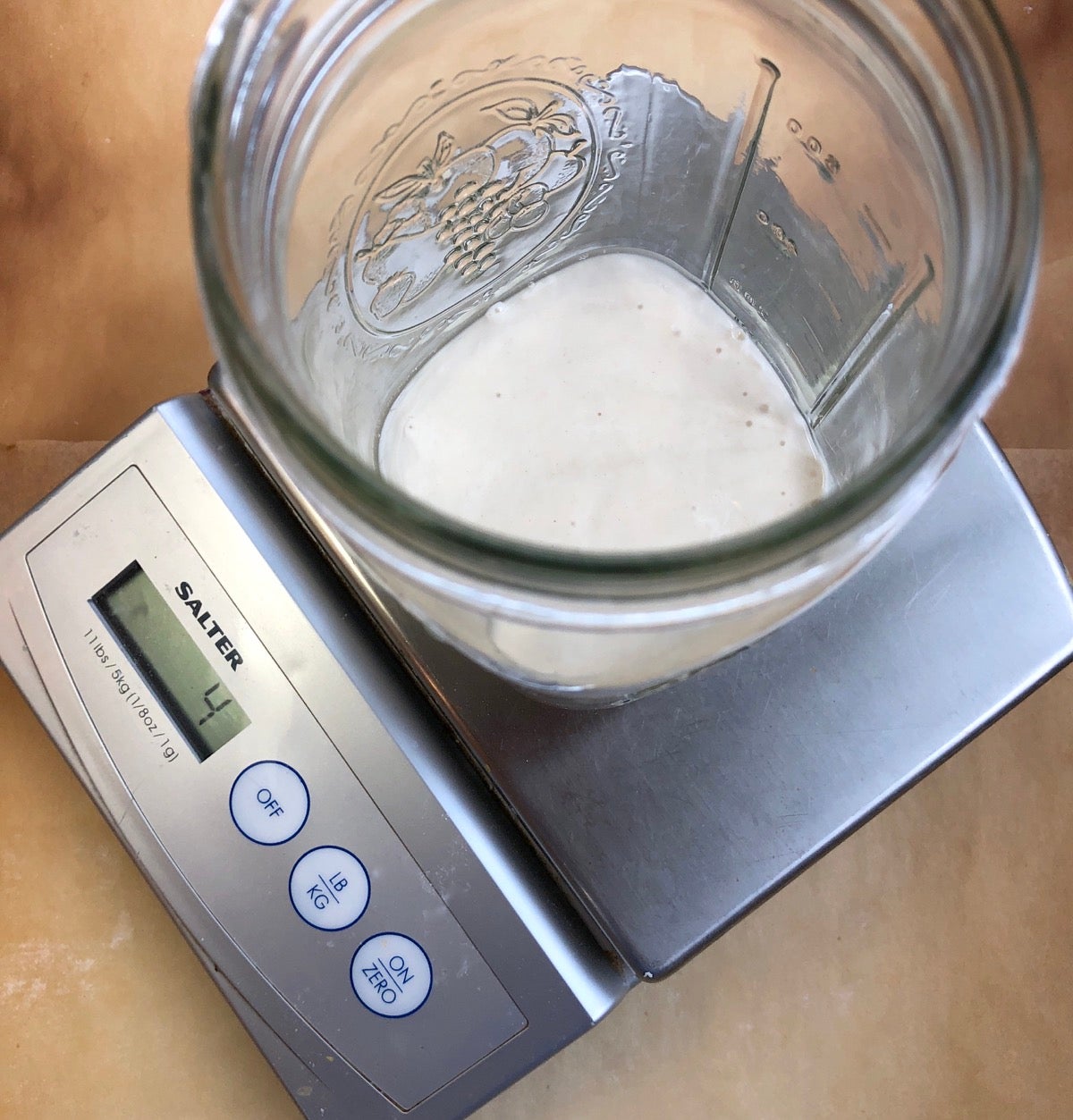
Stir the starter well and discard all but 1/2 cup (4 ounces, 113g).
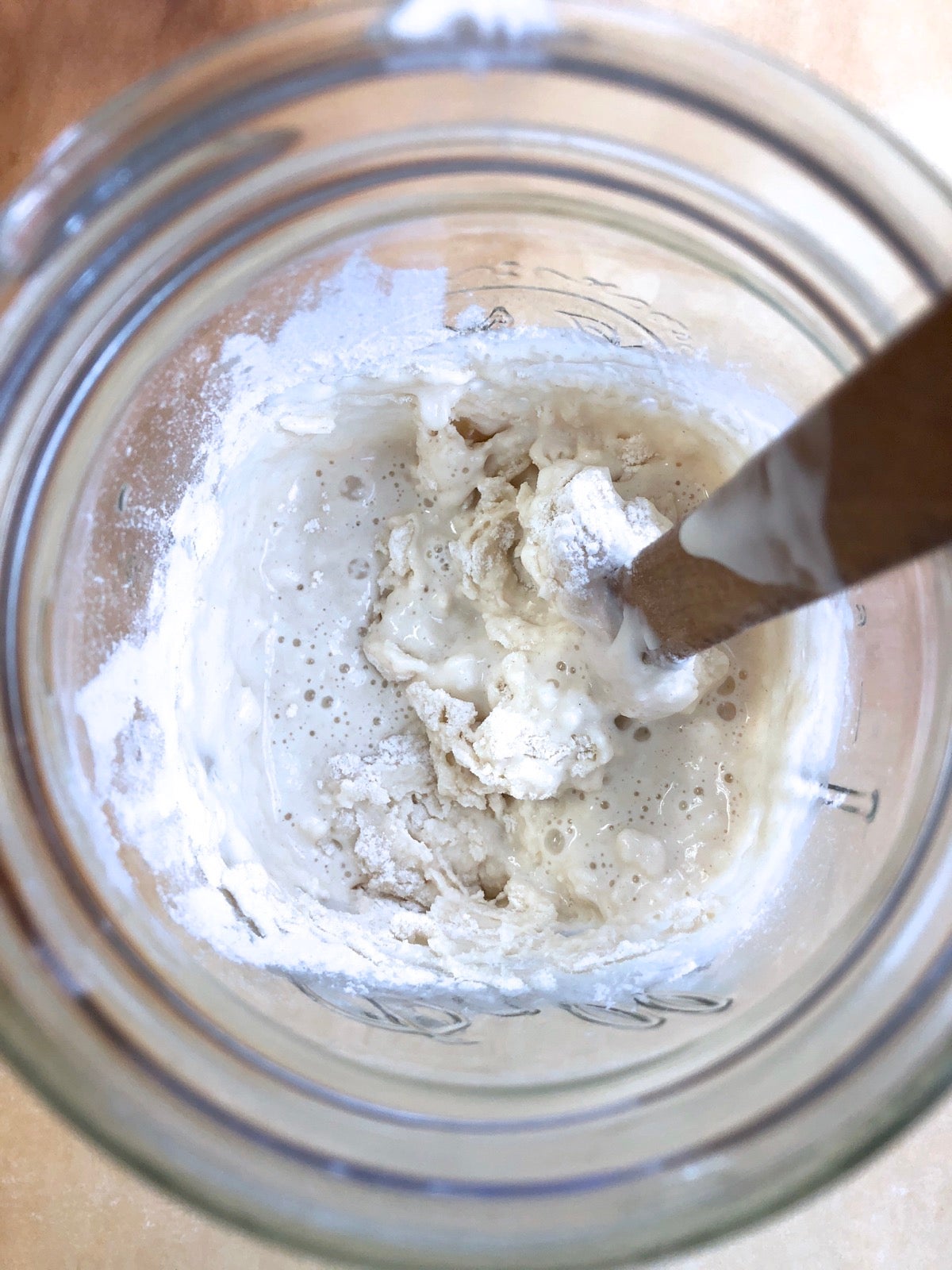
Add about 1/2 cup (4 ounces, 113g) room-temperature water (hereafter known simply as "water") and a scant 1 cup (4 ounce, 113g) King Arthur Unbleached All-Purpose Flour (hereafter known simply as "flour") to the 1/2 cup of starter.
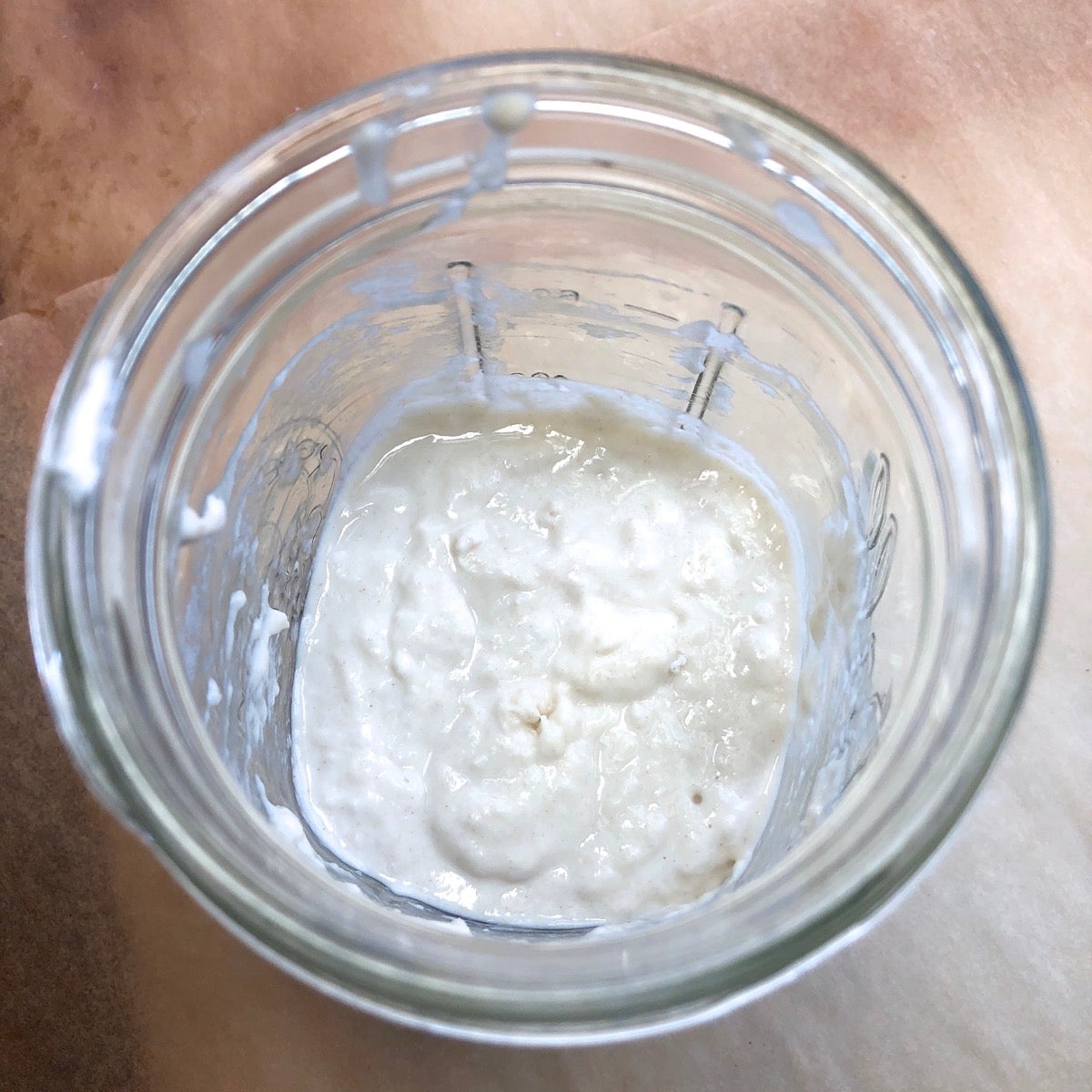
Mix until smooth, and cover.
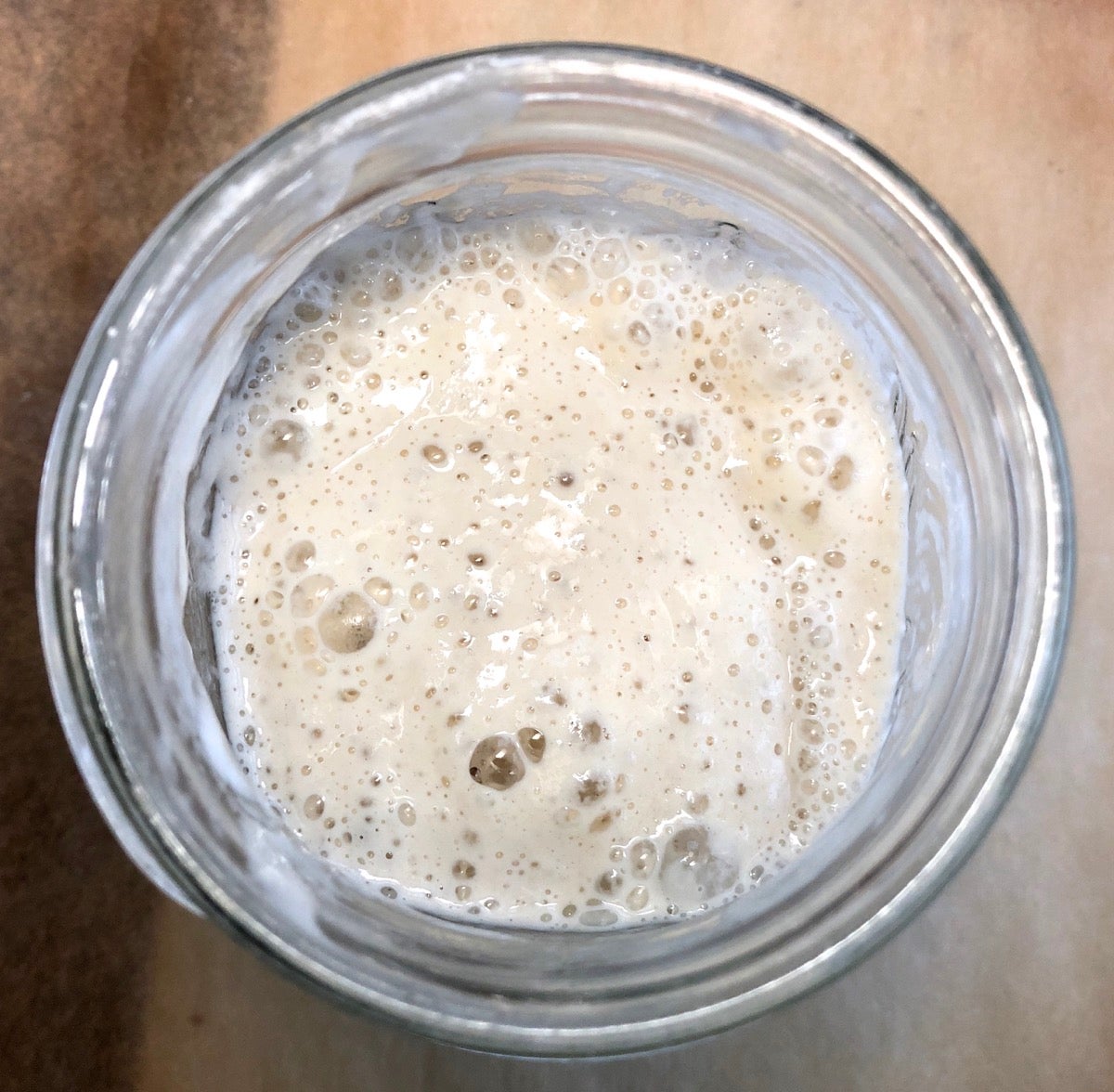
Your starter will bubble and grow until it's doubled (or more) in size...
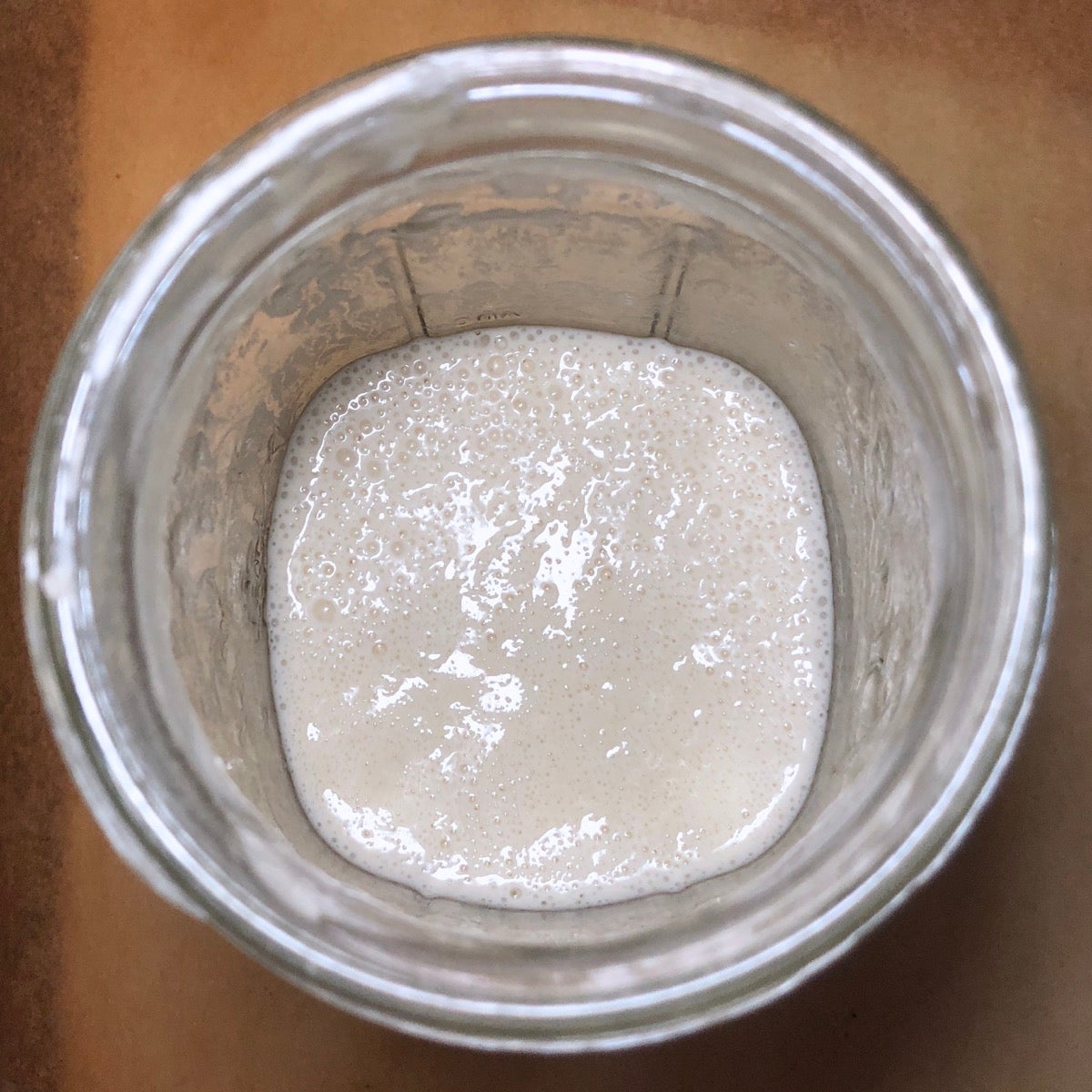
...then will gradually sink as it awaits its next feeding. Repeat this feeding process every 12 hours.
This whole process will take anywhere from a couple of hours to all day, depending on the health of your starter and the temperature of your house: the colder the environment, the more slowly your starter will grow. If the normal temperature in your home is below 68°F, we suggest finding a smaller, warmer spot to develop your starter.
The ideal solution is a folding bread proofer, which can be programmed to exactly 70°F, sourdough starter's favorite temperature.
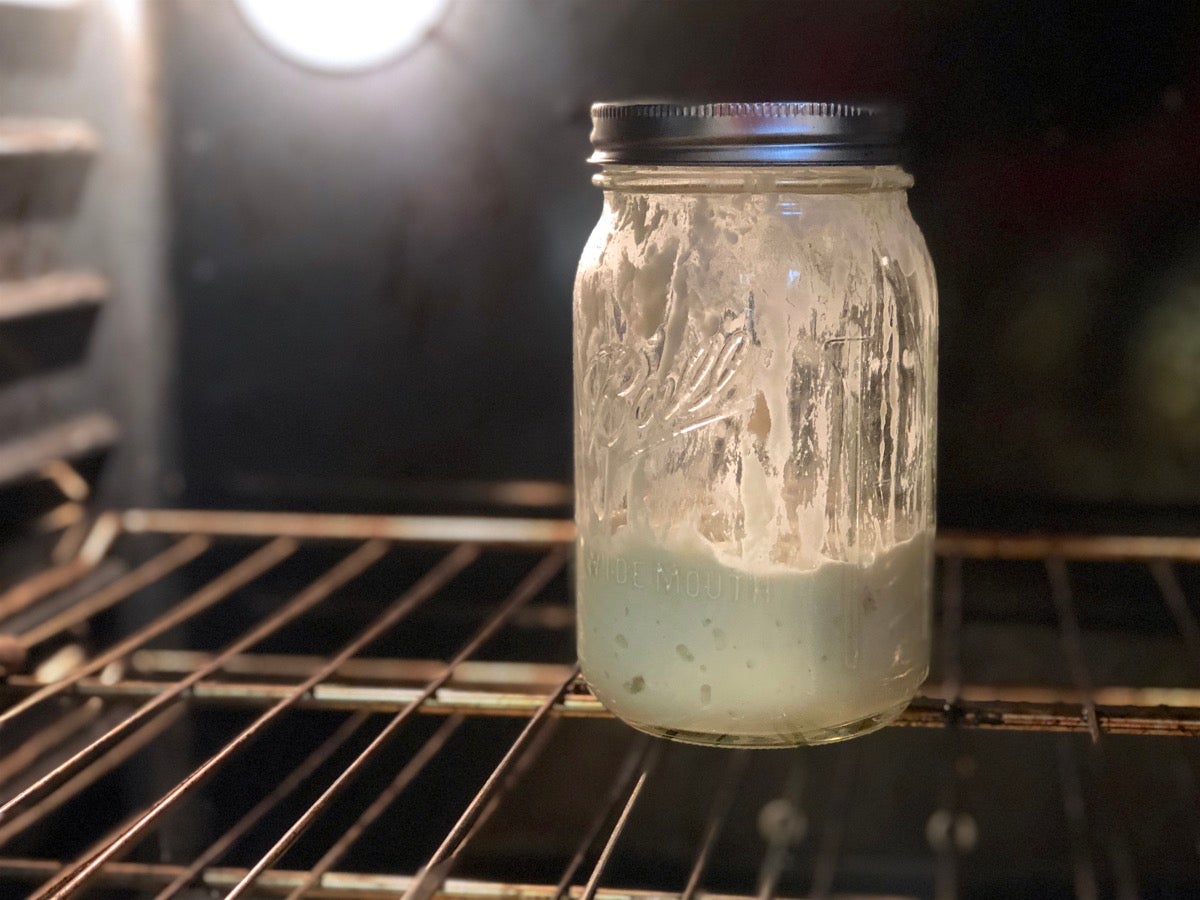
Absent that, I like to set starter in my cold oven with just the oven light on. Over time, the light will raise the oven's temperature to 90°F. Since I don't want it quite that hot, I'll turn the light off after an hour or so —however long it takes to reach 70°F — then turn it back on again if necessary.
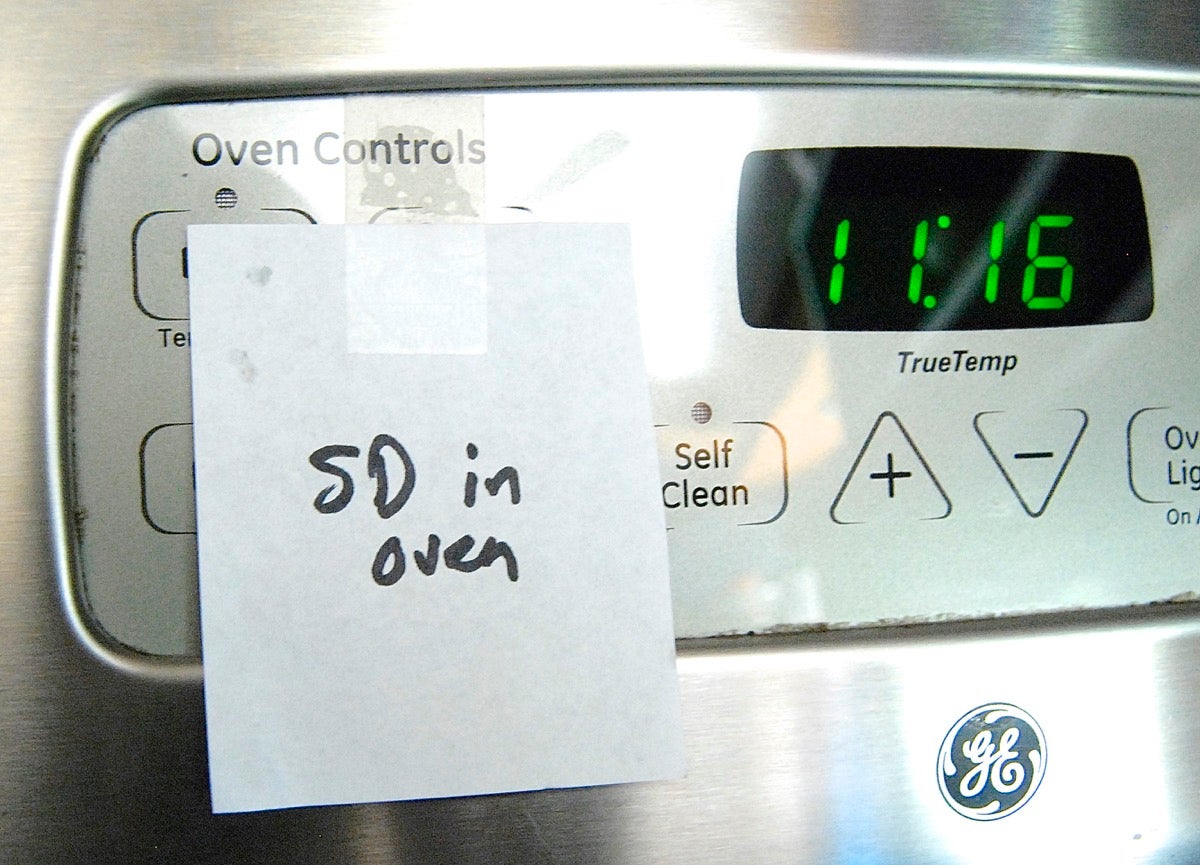
Caveat emptor: If your starter's resting in the oven, put a reminder over your oven controls lest you inadvertently start preheating it with the starter inside! Been there, done that...
Other options: Set your container of starter atop your water heater, refrigerator, or another appliance that might generate ambient heat, or near a heat source (baseboard heater, etc.). Or place it on a folded dish towel laid atop a heating pad on its lowest setting.
For most home bakers, daily feeding is impractical; so you'll need to store your starter in the refrigerator and feed it once a week.
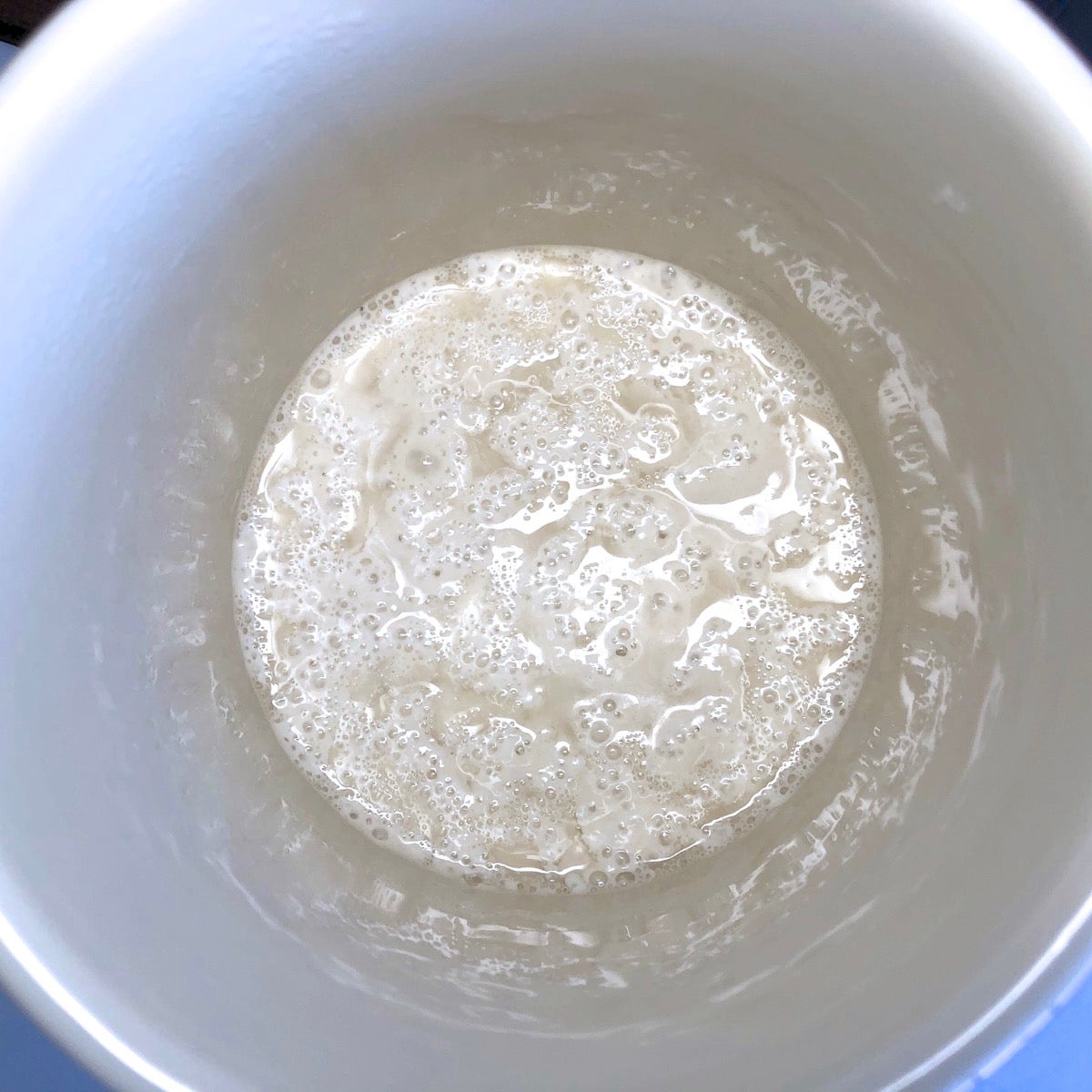
Take the starter out of the fridge. If you're feeding it weekly, it will probably appear a bit frothy. There may be a bit of light amber or clear liquid on top. Either drain this off or stir it in, your choice; it's alcohol from the fermenting yeast.
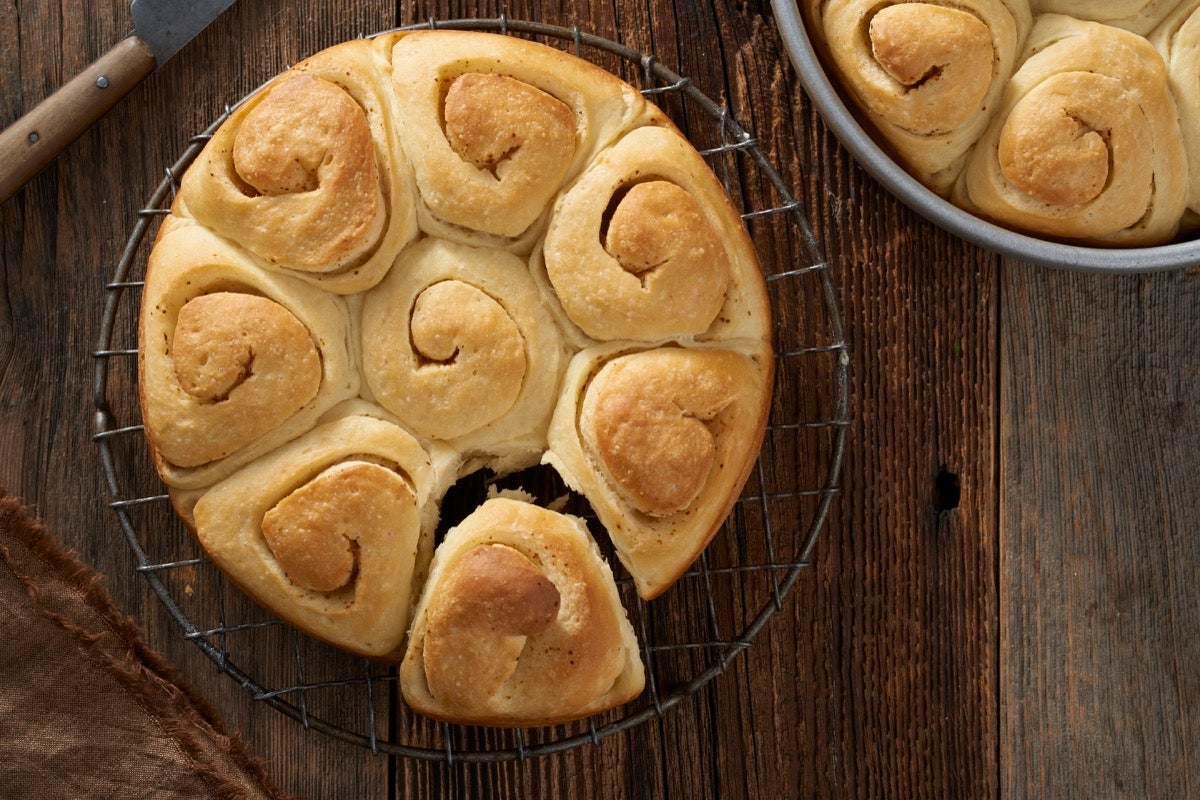
Remove all but 4 ounces (113g) starter. Use this “discard” to make pancakes, waffles, cake, pizza, flatbread, or another treat.
Or, simply give to a friend so they can create their own starter.
Add 4 ounces (113g) room-temperature water and 4 ounces (113g) flour to the remaining starter. Mix until smooth, and cover.
Allow the starter to rest at room temperature (preferably about 70°F) for 2 to 4 hours, until it shows signs of life; this gives the yeast a chance to warm up and get feeding. Once it's started to bubble, refrigerate it.
If your starter has been refrigerated, you’ll want to raise its activity to a more energetic level. You can do this by giving it a series of feedings at room temperature, anywhere from a couple over the course of a day to two feedings a day for several days, depending on how healthy it is.
Take the starter out of the fridge, discard all but 4 ounces (113g), and feed it as usual with 4 ounces (113g) water and 4 ounces (113g) flour. Let it rest at room temperature for about 8 to 12 hours, until bubbly.
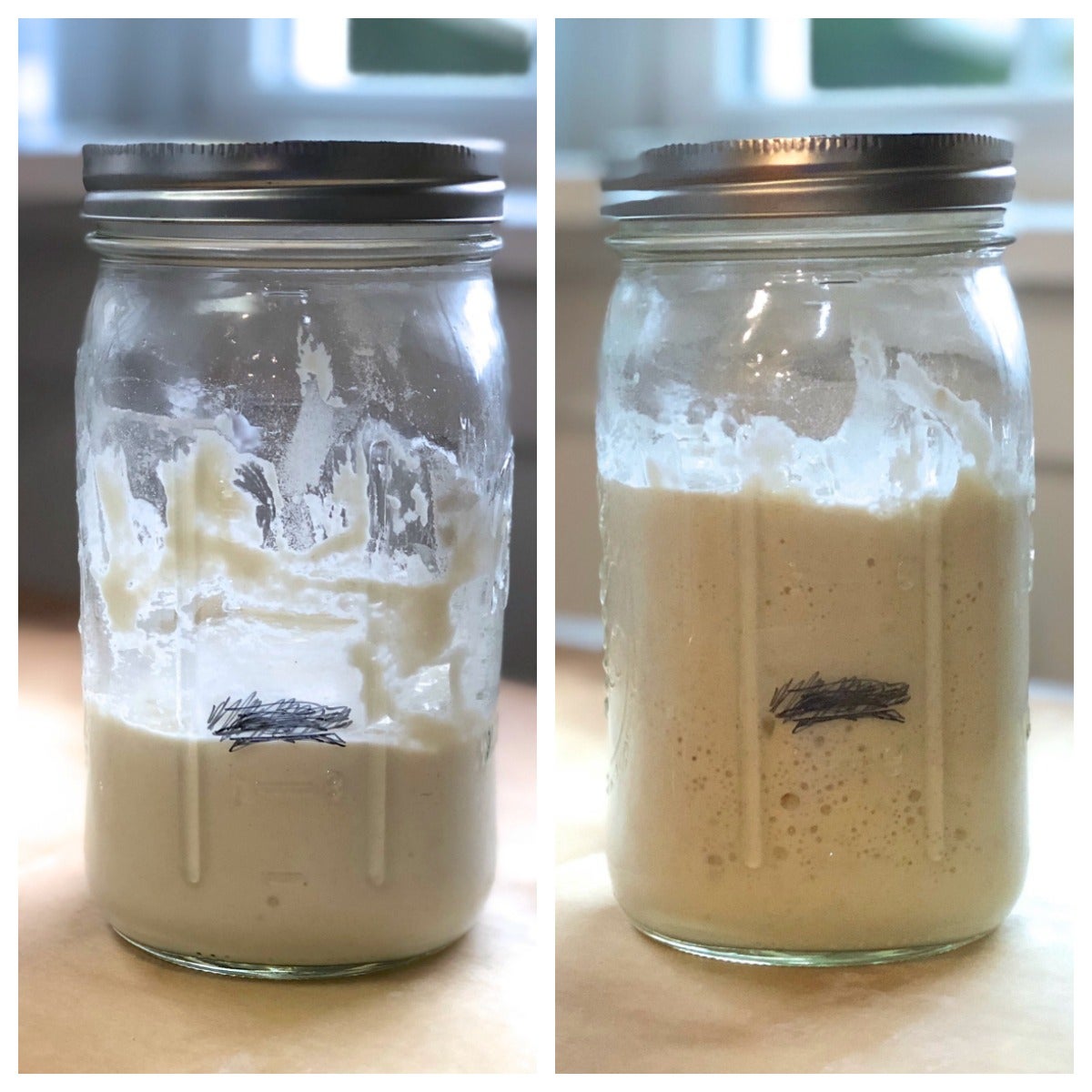
Repeat as necessary, every 12 hours, until you notice the starter doubling or tripling in volume in 6 to 8 hours. That means it’s strong enough to leaven bread.
For the final feeding, make sure you add enough flour and water to use in your recipe, with a little left over to feed and maintain the starter for the next time you bake.
For instance, if your recipe calls for 1 cup (about 8 ounces, 227g) starter, add 4 ounces (113g) each water and flour. If your recipe calls for 2 cups (about 16 ounces, 454g) starter, add 8 ounces (227g) each water and flour.
Once the starter is bubbling and vigorous, remove what you’ll need for the recipe and set it aside. Feed the remaining starter with 4 ounces (113g) flour and 4 ounces (113g) water. Mix until smooth, and allow the starter to work for about 2 to 4 hours at room temperature, until it shows signs of life, before putting it back in the refrigerator.
Feed with half whole-rye (pumpernickel) flour or whole wheat flour for a few days. The extra nutrition in the bran and germ can increase the starter’s acidity.
Be sure your starter has a chance to ripen (develop) fully before it receives another feeding; before you use it in a recipe, or before refrigerating it. An ideal feeding regimen for a starter kept at room temperature (in the low 70s) is two feedings a day at 12-hour intervals.
You may be letting the starter ripen too long before using it. Once your starter is bubbling and vigorous, it’s time to make bread, feed it again, or refrigerate until its next feeding. Don't let it become bubbly, rise, and then fall and start to "calm down;" that's adding acidity to its flavor. Reduce the duration of ripening as necessary.
Also, try ripening your starter in a slightly cooler area, so it doesn’t digest its meal of flour and water too quickly.
Sometime you may find yourself with a starter that’s gone far too long without a feeding. Covered in a clear, dark liquid (alcohol, a by-product of yeast that's been deprived of oxygen), the starter will lack bubbles or other signs of activity, and will have a very sharp aroma.
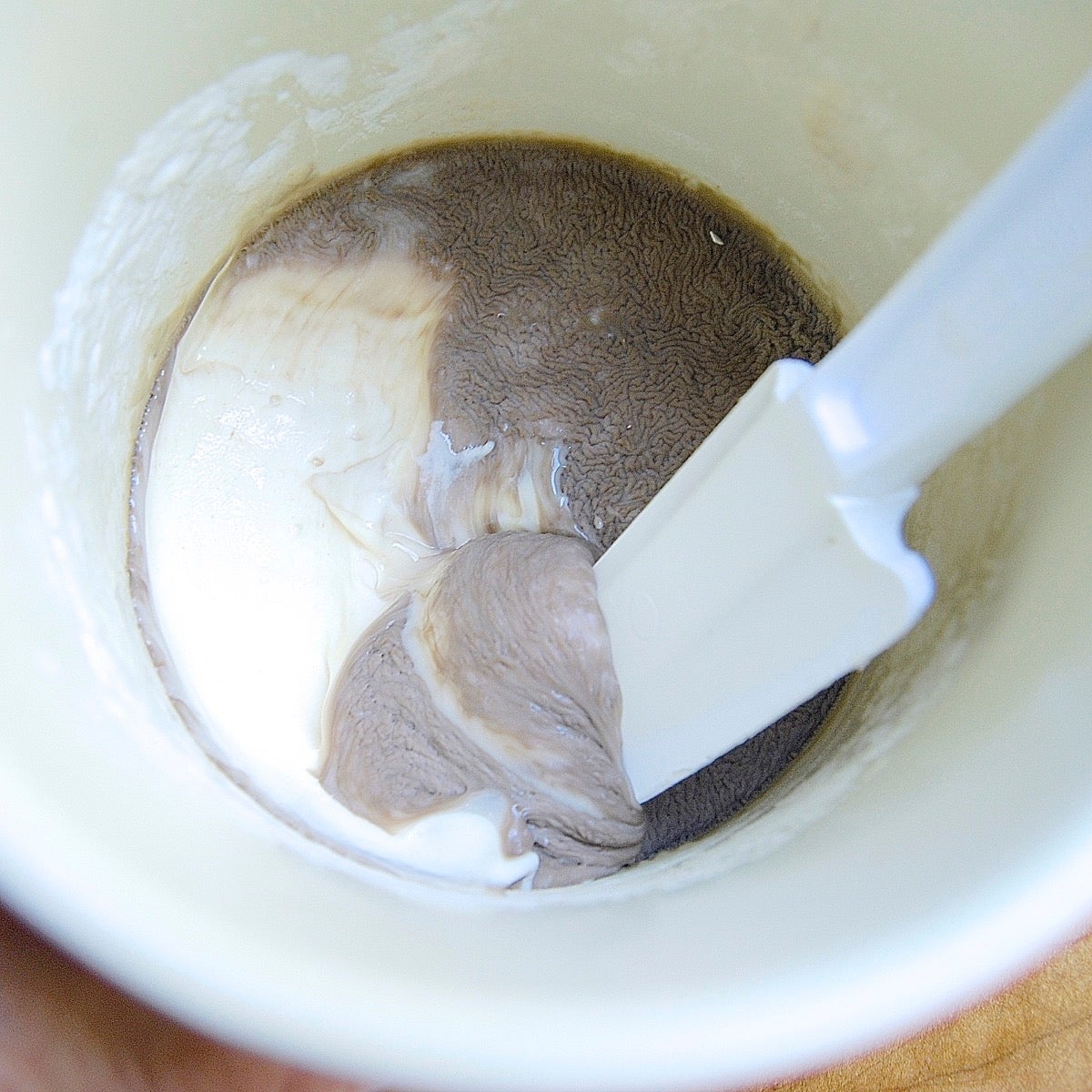
The starter may even have dry skin on top, usually gray or brown in color. Skim off and discard the skin; it's not harmful, but will discolor your starter. Although at this point the starter appears lifeless, its microflora will spring into action again as soon as they get a few good meals.
Stir the liquid back into the starter. Discard all but 4 ounces (113g), and set the bowl or crock on the counter; you’re going to be leaving it at room temperature (at least 70°F) for awhile.
Feed the starter 1/2 cup (4 ounces, 113g) water and a scant 1 cup (4 ounces, 113g) all-purpose flour twice a day, discarding all but 1/2 cup (4 ounces, 113g) of the starter before each feeding.
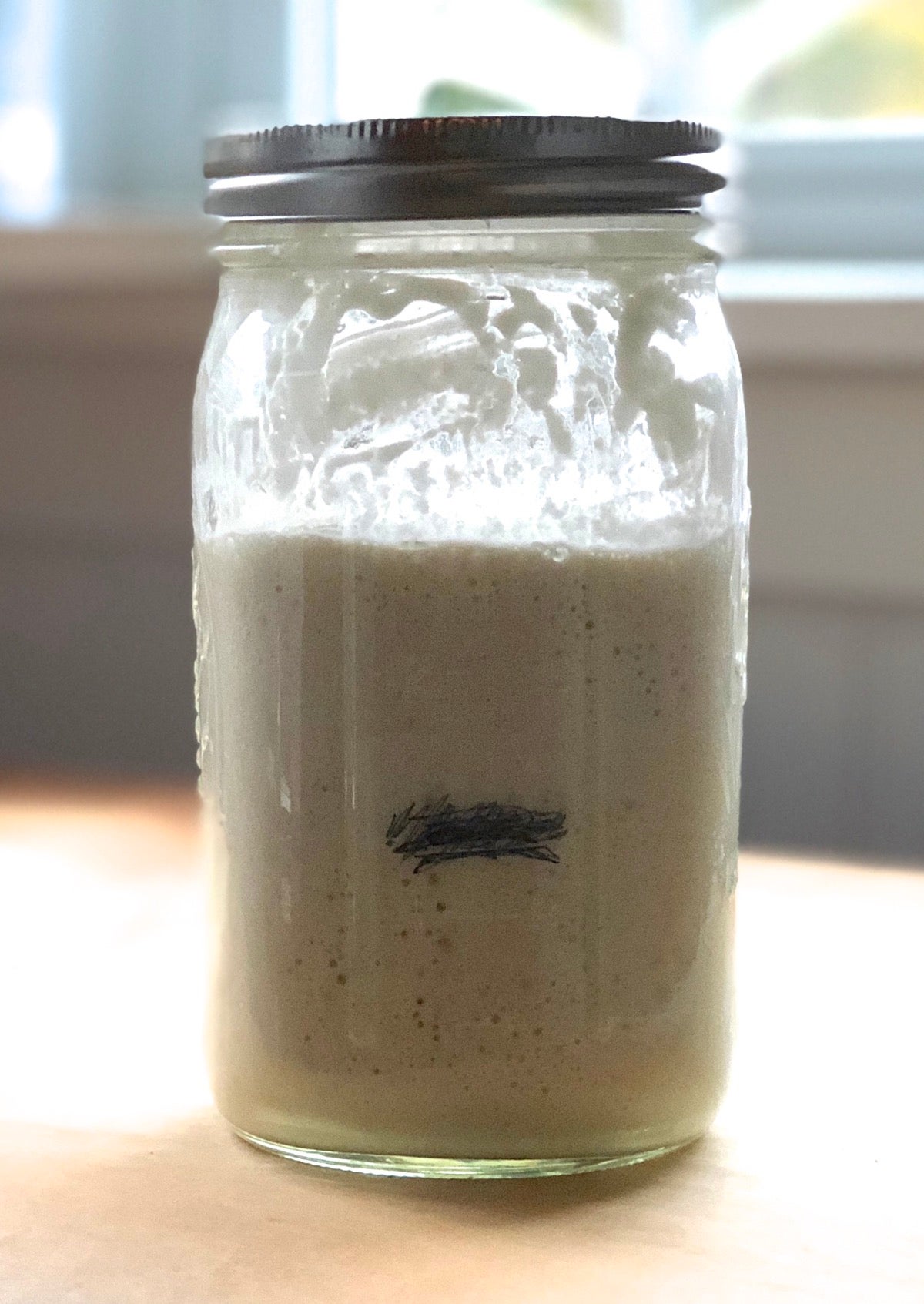
It should soon become healthy, bubbly, and active.
Sourdough starters are hearty, and easily resist spoilage due to their acidic nature. The pH of a sourdough starter discourages the proliferation of harmful microorganisms.
However, living creatures sometimes get sick, be they humans, pets, or even sourdough starter. If your starter turns ominously pink, orange, or red; shows signs of mold growth, or smells decidedly putrid, throw it away and begin again. Luckily, in our experience, this rarely happens. But for more information see our post, Sourdough starter troubleshooting.
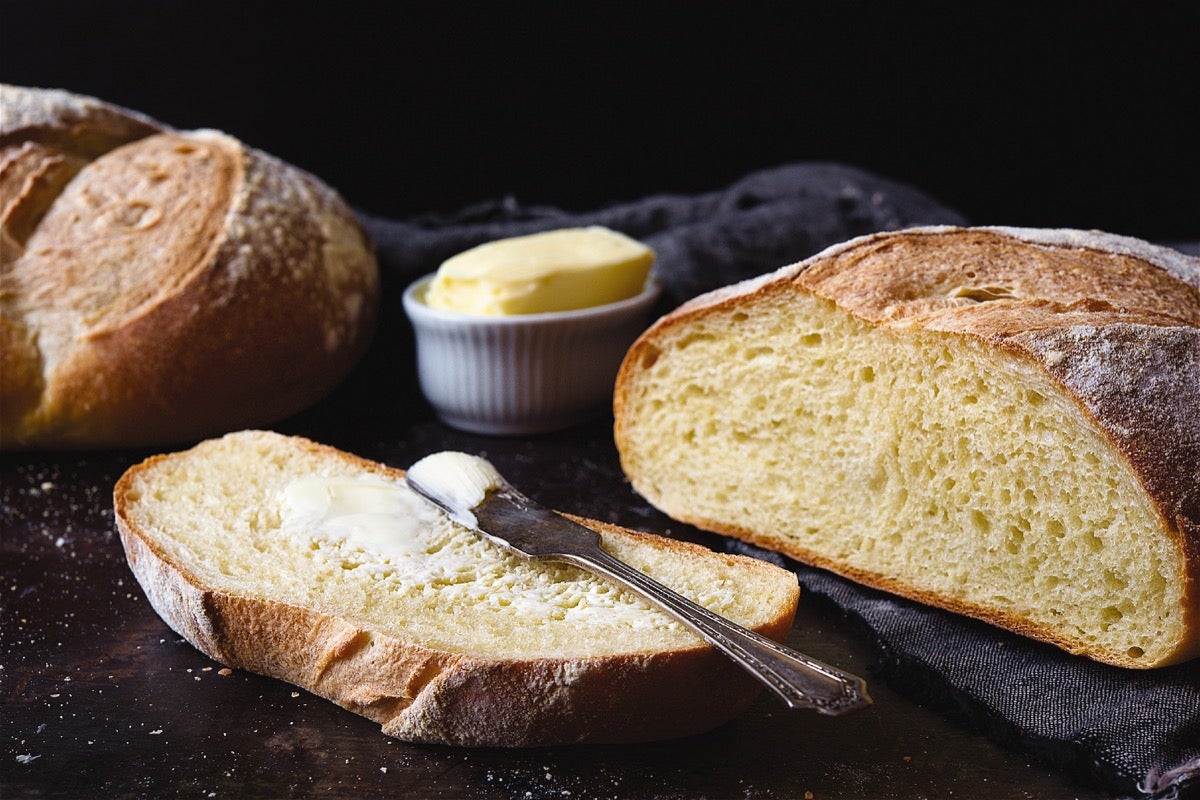
OK, after all of that — how about baking some sourdough bread? Our Rustic Sourdough Bread is a great place to start.
Or for "true" sourdough, without any added yeast, try our Naturally Leavened Sourdough Bread.
Want to make your own homemade starter from scratch? Read our post on creating your own sourdough starter. And for easy access to just about everything we've learned about sourdough baking here at King Arthur Flour (and are eager to share with you), see our sourdough baking guide.